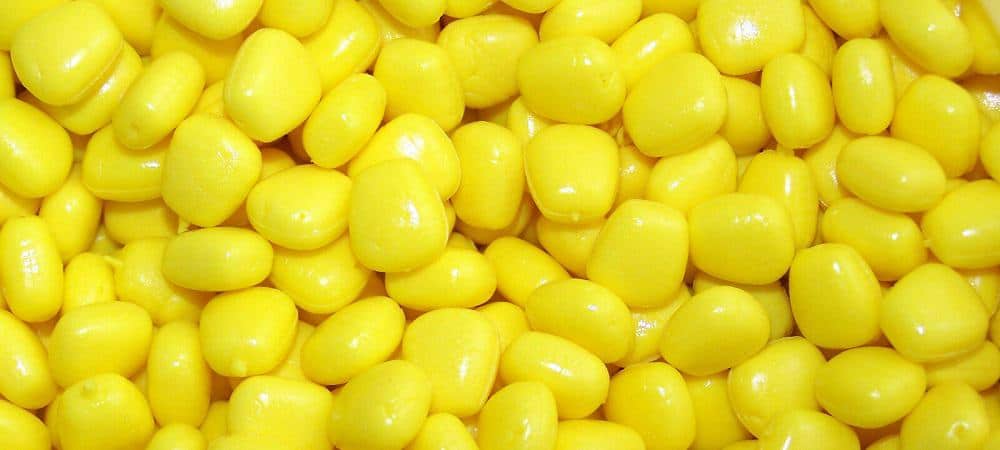When you hear carp anglers say that they have had some trouble with the crays, you could be forgiven for thinking that they were having issues with some East End gangsters. The more likely story is that they are having their rigs picked up and their hook baits disturbed by crayfish.
Crayfish breed quickly and grow quickly, so unless action is taken to remove them from the fishery, they will be there to stay.
While crayfish can be an absolute nuisance, there are ways that you can combat them and still present a bait nicely for its intended recipient. Let’s take a look at some of the ways that we can stop crayfish from interrupting our carp fishing.
Which Type Of Hook Link Should I Use?
Your choice of hook link is absolutely critical when dealing with crayfish. Braided hook links tend to be far too supple, and that extra movement means that the crayfish can have them tied up in knots within minutes of homing in on your area.
Coated braids will fare better than uncoated, but you will need to ensure that the coating on your chosen braid cannot be easily penetrated. If it can be, it will only offer a limited period of respite until the crayfish have stripped the coating and proceeded to turn your hook link into a miniature birds nest or cut through it all together.
When I know that crayfish are present where I am fishing, depending on what hook bait presentation I am opting for, I will either use a stiff coated braid or a strong fluorocarbon hook link. Both of these options seem less prone to tangles or having their strength compromised.

Where Should I Position My Bait?
“Prevention Is Better Than Cure” is a well-known saying that is certainly relevant when talking about carp fishing in lakes where crayfish are present. What I mean by this is that it would be better to try and stay away from crayfish, rather than adjusting your tactics to combat them.

While precautions will still need to be taken, you can do your best to avoid crayfish by presenting your bait in spots where they are less likely to reside. Crayfish like to patrol the margins and other hard spots where they feel comfortable and are less likely to approach your baited area if it is on a large silt or weed bed. Spending a bit more time feature finding could mean the difference between a successful session or one that is plagued by these nuisances.
What About Hook Baits?
If you are anything like me, then your bait bag probably has multiple flavours, styles and brands of boilies in it. Many different pop-ups, wafters and packets of out-of-date boilies all feature in my bait bag, along with an extensive selection of particles and pellets.
If you haven’t got an out-of-date bag of tutti frutti boilies stuffed at the back of your bait bag, are you even a carp angler?!
You may hear some anglers say that there are certain flavours of boilies that crayfish don’t like or that they avoid particles altogether. I always like to err on the side of caution and assume that any bait is fair game for a crayfish, so my first line of defence will always be for my hook bait to be as hard as possible for the crayfish to break down. With that in mind, here are a few tips, tricks and bait options to ensure that you are presenting an anti-crayfish hook bait.
Use Extender Stops To Secure Your Bait
First things first, do not use standard boilie stops when fishing for carp in a lake that has crayfish. All of the following tips will be useless if you don’t use extender stops to secure your bait.
A standard boilie stop will be easily removed by the crayfish, so regardless of what you have done to enhance your bait, it won’t matter if it can be easily tugged from the hair.
Dry Your Boilies
I have tried this method with both frozen and shelf-life boilies and, although the results were more noticeable with the frozen boilies, it worked with the shelf-life ones too.
All you need to do is take the number of boilies that you wish to use as hook baits, then store them in a bucket for 3-4 days and completely cover them with one of the following:
- Rice
- Sugar
- Rock Salt
By doing this, you are drawing any excess moisture from the boilies and hardening them sufficiently so that a crayfish cannot instantly break them down. Unfortunately, the boilies will eventually take on water and soften, so this won’t stop the crayfish from eventually getting their wicked way, but it will slow them down long enough for the carp to (hopefully) move into your baited area.
Multiple personal bests and several British records have been caught using these. Take a look at the best boilies for carp fishing
Mesh Your Baits
Another tactic that can be very effective is to mesh your hook baits. Arma Mesh from Fox is excellent, but you can also use a pair of tights or stockings or even a shower loofah as a cheaper alternative.
Simply take your hook bait, wrap it in the mesh and tie it down tightly (you can also blob the end with a lighter if required). Again, this method will not make your offerings invincible to the advances of the crayfish, but it will add valuable hours of fishing time to your hook baits, increasing the chances of it being picked up by a carp.
Shrink Wrap Your Baits
Similar to meshing your hook baits, you can partially cover them with shrink wrap. While this is most definitely a very sturdy way of protecting your hook baits, you need to ensure that the attractors can leak out, which you can do by either piercing the shrink wrap or using a pre-perforated solution.
To shrink wrap your offering, all you need to do is select the hook bait that you intend to use and lightly pierce it with a baiting needle. Then take the correct length of shrink tube and place it over the hook bait before steaming it over a kettle to ensure that it shrinks down neatly.
Super Wrap from Korda and Hard Ball Bait Saver from Gardner are both good options, but you can also pick up generic shrink wrap from Amazon or eBay for a fraction of the cost.Use Hard Hookers
If some of the solutions above seem like a bit too much hassle, you can always buy ready-made Hard Hookers.

Most bait companies now supply a range of Hard Hookers that are exact flavour matches for the other products in that range. These baits are perfect for combatting crayfish due to their extended lifespan in the water.
Replace Pop-Ups With Cork Balls
Cork balls can be excellent replacement for pop-ups.
Simply soak the cork ball in your chosen glug and use it as a hook bait in the same way you would fish with a pop-up. However, if the cork ball takes on too much of the glug, it could end up as a wafter or may even act like a bottom bait, so make sure you check that your hook bait is balanced correctly before you cast it out.
Use Plastic/Imitation Baits
I know that plastic baits are frowned upon by a lot of anglers and I do try to avoid using them unless it is absolutely necessary, but they can minimise the damage that crayfish can do to your hook bait.
When fishing a lake that has a population of crayfish, a lot of anglers prefer not to bait too heavily, fearing that it may draw them in. Personally, I prefer to put a good few spombs of bait out in the hope that having plenty of carp in the area will mean that the crayfish scuttle away to safety.

As my mixes usually include a good helping of the yellow stuff, I will often use fake corn as a hook bait when fishing a lake where I am likely to be troubled by crayfish.
Are Particles The Answer?
I mentioned earlier that some anglers swear that crayfish avoid certain baits altogether, whereas I prefer to think that no bait I put out will definitely be safe.
Although I think it can depend on many different factors, including the amount of crayfish in the lake or how much natural food there is, it has become apparent on several waters that crayfish don’t seem to attack tiger nuts, chick peas etc as much as they do boilies.
Maybe it is impossible to know for certain what it is about crayfish and their apparent lack of interest in particles, but it is definitely an option to keep in mind if you ever find yourself in this situation.
Having confidence in your bait is vital for success. Take a look at what we believe to be the best particles for carp fishing
Home-Made Boilie Tips
If you make your own boilies, extending the length of time that you boil them for will make them harder. For 15mm-18mm boilies, try boiling them for 3 minutes and then air dry them for 12 hours to ensure that they are extremely tough.
Putty Or Split Shot?
Crayfish seem to be attracted to tungsten putty! I don’t know why, though I have heard other anglers suggest that it could be that the bait flavours or glug residue from our fingers has sunk into the putty and made it more attractive.
Anyway, regardless of why, it is highly likely that if you use tungsten putty on your rigs, the crayfish are going to be drawn to it. With this in mind, I highly recommend using a split shot as an alternative.
Admittedly, a rig balanced with split shot is unlikely to be as neat and tidy as a rig boasting some precisely moulded putty, but desperate times sometimes call for desperate measures.
Lead Size
And last but by no means least, I recommend that you try to use a bigger lead when you are up against crayfish.
For most of my fishing, I use as light a lead as possible, but when crayfish are present, I will use at least a 3oz lead to try and lock things down a bit.
They are unlikely to be able to move a heavy lead, so as long as your hook bait is fortified and your rig can reset itself, you should be able to remain confident that your rig hasn’t moved and disturbed your presentation.
Conclusion
Crayfish can be disruptive, but if they exist in waters where there are some carp that you wish to target, then you are left with no choice other than to try and combat them as best as you can.
I hope that at least one of the tips above has given you an idea of how you can minimise the damage from crayfish and, if it helps you put an extra fish on the bank, then that is good enough for me.
Do you have any other methods that you use to stop the advances of crayfish? If you do, please let me know in the comments.

